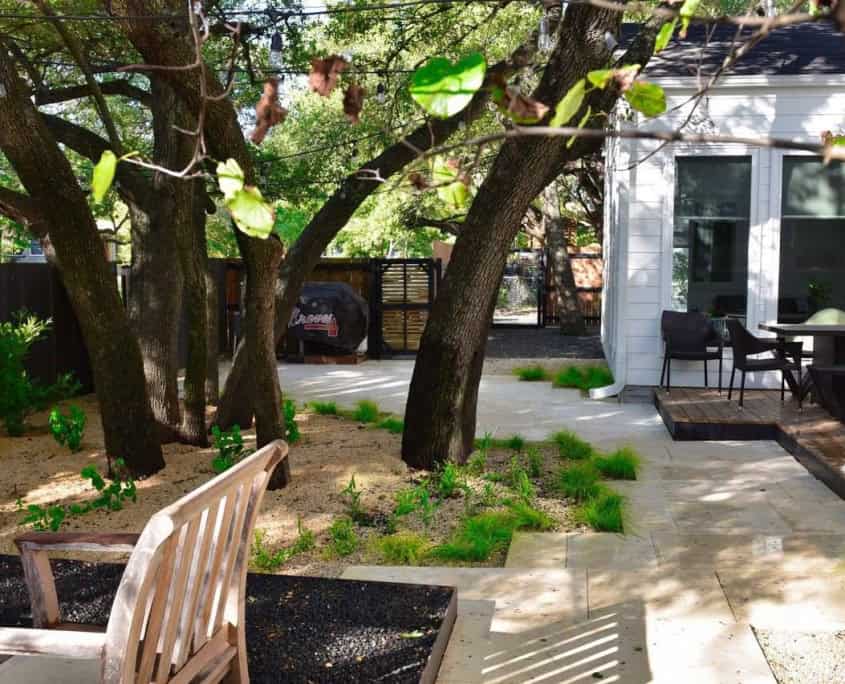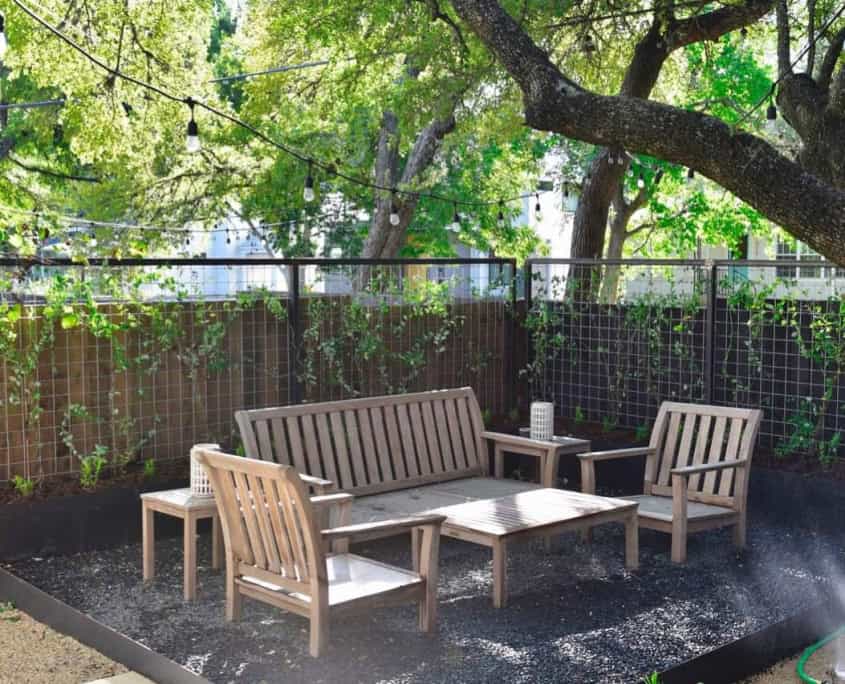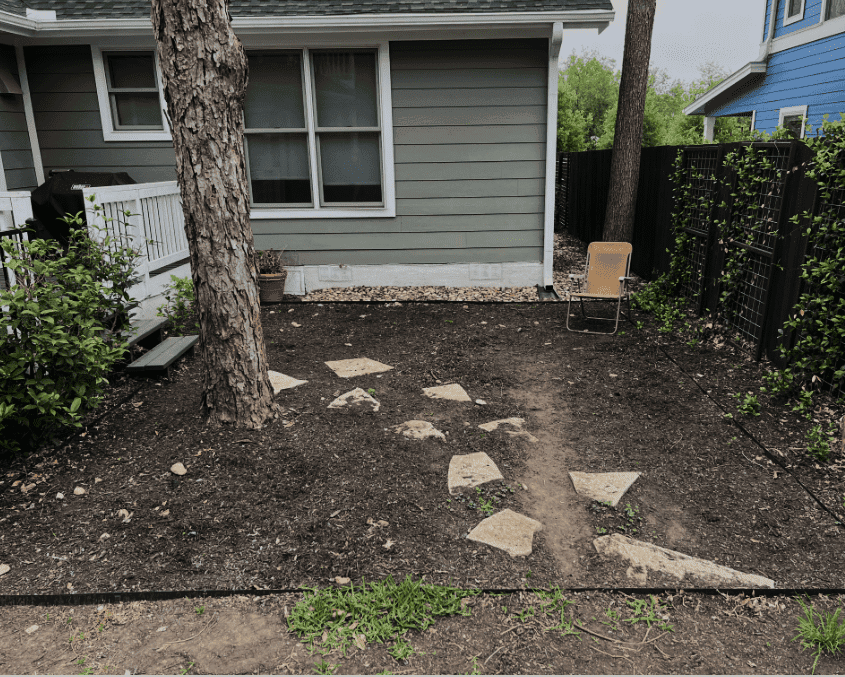Tag Archive for: Residential Landscape
Side Yard Overhaul with Deck, Fence, and Seating
Priorities: – Functional Seating – Aesthetics Match – Access For Elderly Parents
Challenges: – Heavy Shade – Compromised Deck
Solutions: – Steel Fixtures – Shade-Tolerant Natives – Stone Walkways
This project was featured on the 2023 Austin Outdoor Living Tour
Our client approached us with a compact side yard, in need of a comfortable outdoor living area that also complemented their recently-built home. A multi-trunked live oak shaded the small space, which had minimal other plantings and a builder-grade wood deck. The overarching priority was to ease access for the client’s aging parents.

Consultation resulted in a comprehensive landscape design that centered around enlarging the deck and adding a raised seating area executed in welded steel. The construction plan integrated carpentry for the deck expansion with custom metalwork. The landscape design surrounded the structure with steel planting boxes and trellises, while the construction team added Lueders stone pathways to connect the dots. This project seamlessly blended landscape design, construction, and carpentry to create a cohesive outdoor living space.
Right off the bat, our crew ran into trouble: extensive wood rot under the deck. Determining the structure lacked the quality and staying power we wanted to see, rebuilding it from scratch became the only option. New concrete footings, posts, joists, and decking all went in.


The crew then installed fencing along new lines that would create more enclosed space — and open the design for the client’s pets with a hog panel-wired doggie window. A new gate completed the access plan. 
Maas Verde selected tough, shade-tolerant native plants like Webberville sedge (Carex perdentata), inland sea oats (Chasmanthium latifolium), yaupon holly (Ilex vomitoria), and turkscap (Malvaviscus arboreus) to foot the live oaks. Coral honeysuckle vines were interlaced into the trellises to soften the edges and create habitat for pollinators like honeybees and hummingbirds. To help the plants get used to their new home, Maas Verde added a simple drip irrigation system.
Pet-Friendly Back Yard, Lighting, and Native Beds
Priorities: – Prolific Front Yard Beds – Dog Run in Back Yard – Shaded Outdoor Seating
Challenges: – Tricky Sunlight Conditions – Damaged Landscape
Solutions: – Light-Matched Planting – Custom Steel Edging – Resilient Surfaces
Two critical concerns for our client guided this residential project. The first was a marginal frontyard garden bed that refused to flourish — either the side in deep shade or the one in constant sunlight.
The second (and more important) was a high-energy family dog named Fargo. Or, more accurately, what Fargo had done to the back yard.

Over the years, the shepherd mix ran a deep trench into his favorite stretch of the property and had reduced a lot of his humans’ landscaping efforts to dust. The challenge was to create a stable solution that could still accommodate the vigorous pet.
In front, a new bed with robust, custom-welded 3/16” steel edging would need to trace the profile of the house and hold plants better suited to their sun exposure.
A final objective: Create a backyard seating space in the shade of a big pecan tree.
Maas Verde pulled up the existing front yard edging, designed new pattern, and sank the new material.
For Fargo’s run, we chose a bocce court filled with a heavy layer of 5/8″ granite gravel. A standup limestone patio and commercial-grade low-voltage lighting framed the back yard seating area.

We placed native plants stragetically in the front yard beds. Turks cap (M. arboreus), sea oats (C. latifolium), and beauty berry (C. americana) went into the shady side and flame acanthus (A. quadrifidus), multiple salvia variants, and Gregg’s mistflower (C. greggii), in the sun.
As a finishing touch, Maas Verde revitalized a rear trellis where a maladapted star jasmine had died in the 2021 winter storm. Star jasmine is a non-native species that doesn’t tolerate cold weather especially well, and can be water-consumptive.
Instead, Maas Verde installed coral honeysuckle — a native climber that attracts pollinators with its beautiful red fluted flowers.

